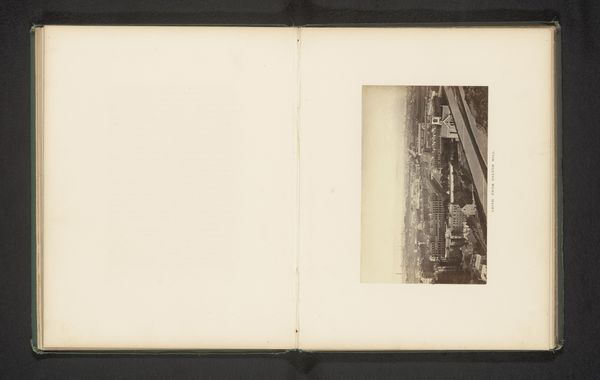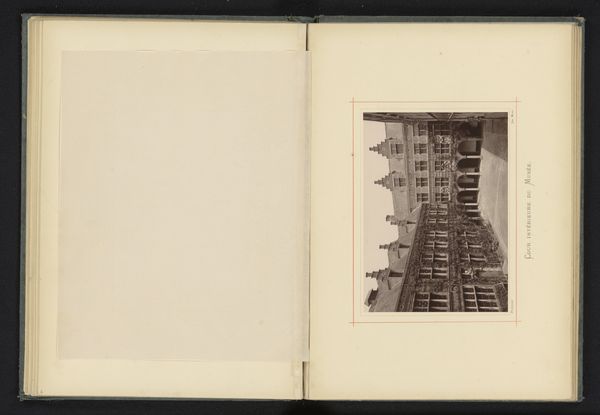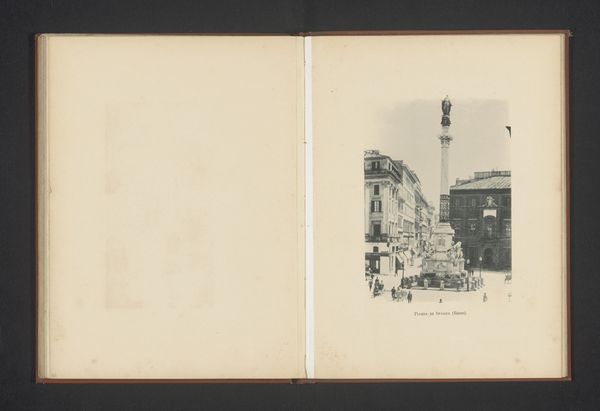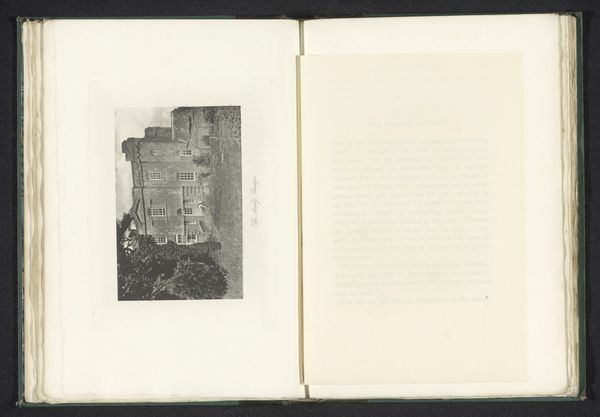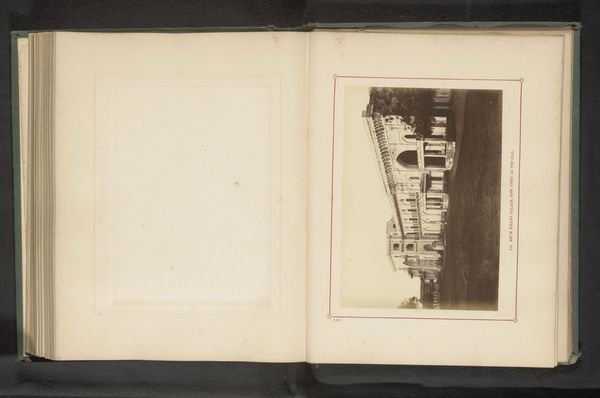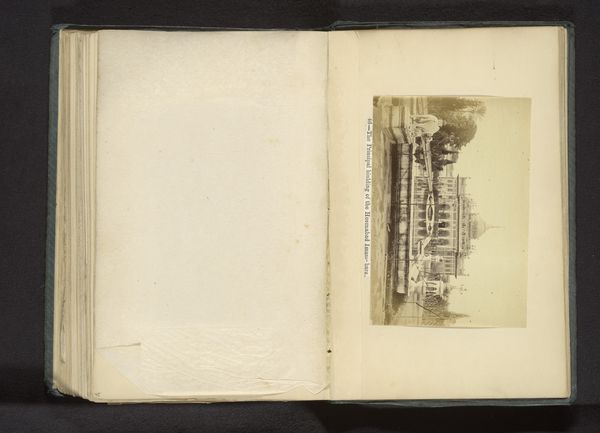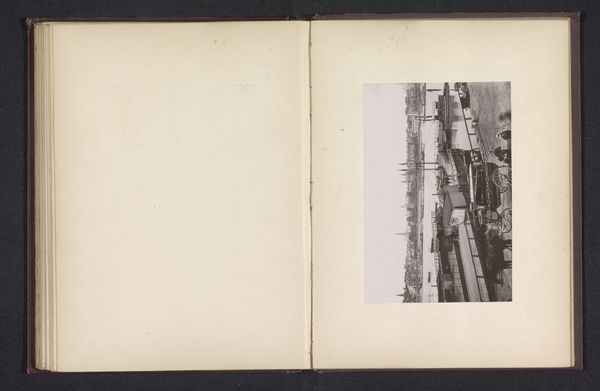
Gezicht op kanonnen op fort Omuk Kebebe in Alexandrië en een binnenhaven before 1885
0:00
0:00
print, photography
# print
#
landscape
#
photography
#
orientalism
#
cityscape
Dimensions: height 110 mm, width 170 mm
Copyright: Rijks Museum: Open Domain
Curator: This photograph, entitled "Gezicht op kanonnen op fort Omuk Kebebe in Alexandrië en een binnenhaven," offers a cityscape from before 1885, attributed to an anonymous photographer. It depicts a view of cannons at Fort Omuk Kebebe overlooking a harbor in Alexandria. Editor: Immediately, the rigidity of the scene strikes me. The dark, heavy artillery juxtaposed against what appears to be a more delicate architectural backdrop… there's a strong tension at play. Curator: Yes, that tension stems from the composition. Notice how the photographer uses linear perspective to draw the eye along the line of cannons, leading toward the city in the background? The strong lines create a powerful sense of depth. The contrasts of textures and shades create rhythm throughout the frame, as well. Editor: Rhythm, yes, but one that feels inherently militaristic. Look at those cannons, dominating the foreground, positioned to oppress what must be the day-to-day lives of the harbor’s inhabitants and their trades. It evokes an era rife with colonial undertones. Alexandria, then a hub of British influence, becomes another backdrop for displays of power. Curator: One could certainly view it that way. Yet, I am also struck by how meticulously the photographer has captured light and shadow. Observe the variations across the stony facade; each shadow conveys a narrative. And consider the albumen print technique; its ability to render detail provides exceptional clarity. Editor: Clarity that ultimately reinforces a power dynamic, though. Seeing Alexandria presented with such seemingly objective precision only further solidifies the West's perception of the East as a space to be studied, cataloged, and ultimately controlled. Photography like this, as seemingly innocent as it appears, helped legitimize colonial aspirations. It's also important to see who this work may have served: how did audiences on both sides understand and consume it? Curator: I agree the historical context adds layers. Though perhaps appreciating the formal aspects of its design allows one to see its lasting influence on documentary-style photography, influencing our eye even today. Editor: And in turn, encouraging more dialogues around how such imagery impacts narratives of people across borders. The more things seem neutral, the more questions we should be asking! Curator: Absolutely. Looking deeper beyond the photographic surface, beyond its mere representation allows critical engagement, making an objective image all the more personal.
Comments
No comments
Be the first to comment and join the conversation on the ultimate creative platform.

